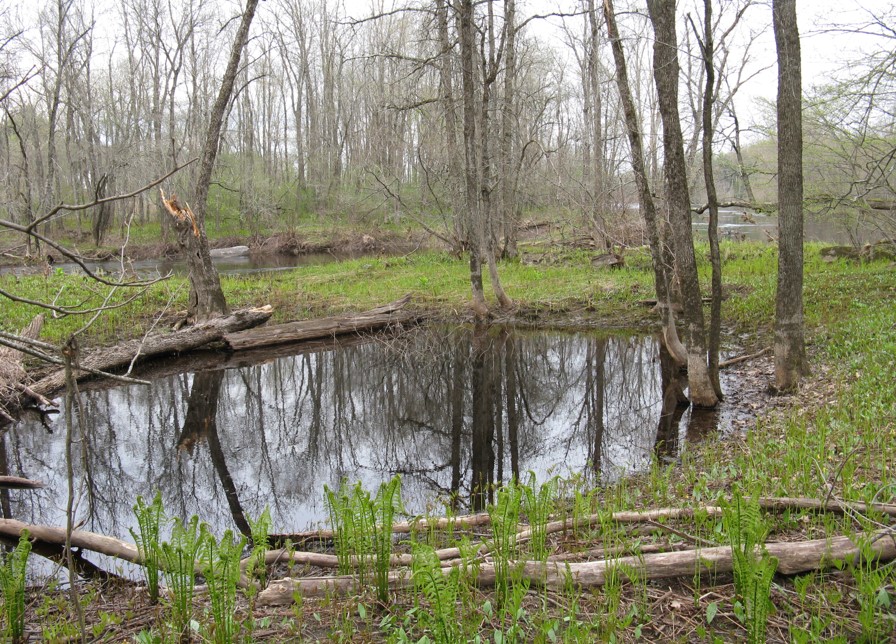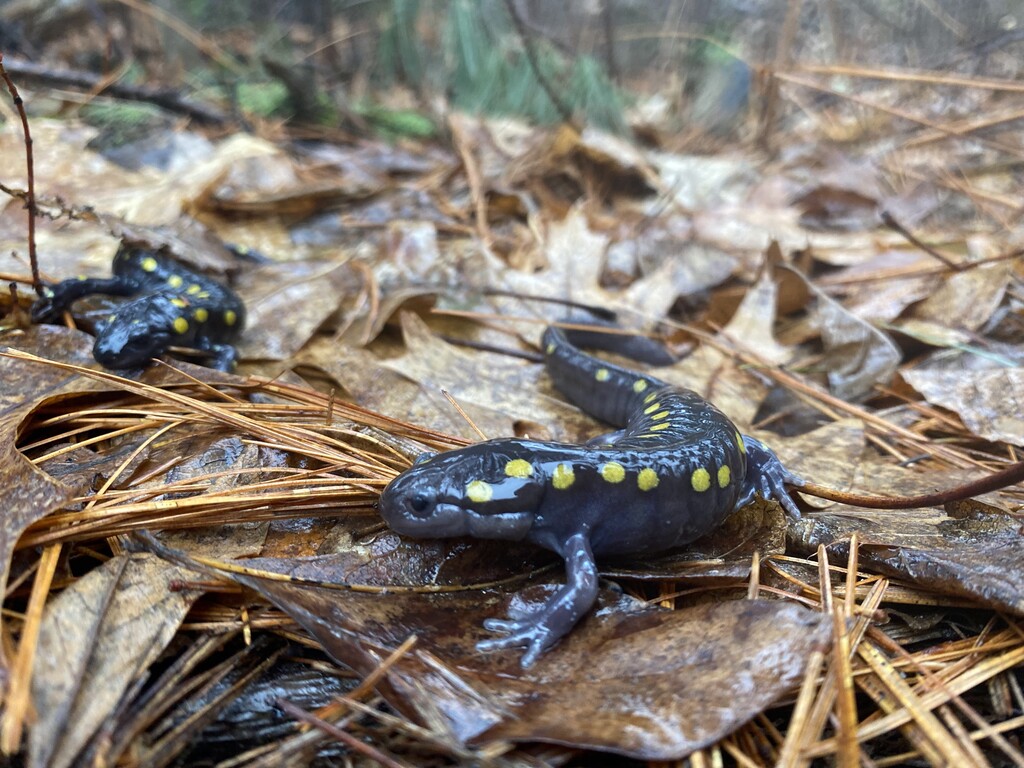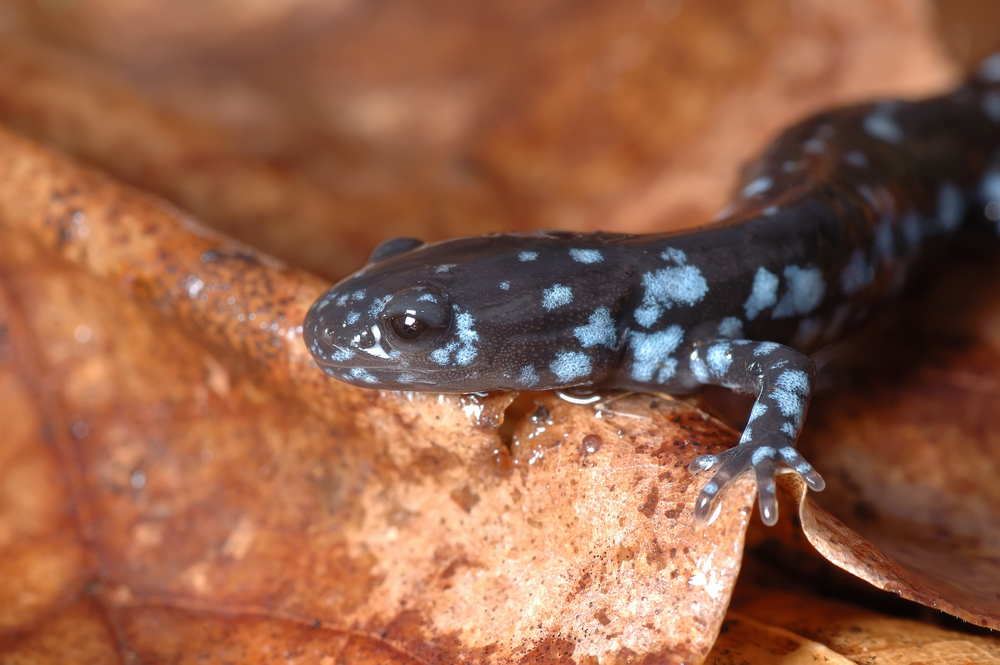ArrayApril 8, 2022 at 12:54 pm
The short answer is, to get to the vernal pool! Of course, there’s more to it than that, so here’s a bit more about vernal pools and why many amphibians are now on the move.
Vernal pools are small, forested depressions that fill with snowmelt and spring rains, but dry partly or completely by late summer. They support several specialized amphibians and aquatic invertebrates that aren’t equipped to survive in other habitats. Vernal pools are a resource for many species such as ducks, moose, and dragonflies, but are particularly important for amphibians. Over half of Maine’s amphibians (frogs, toads, and salamanders) and reptiles (snakes and turtles) are known to visit vernal pools at some point in their lifecycle. Some species such as blue-spotted salamanders, spotted salamanders, and wood frogs breed almost exclusively in vernal pools.

Following a long winter partly frozen and buried in the forest floor, a few amphibians will start to make their way back to vernal pools in early spring. Mass migration events are often triggered on rainy nights once the ground is thawed, and nighttime temperatures remain above 40 degrees. This year, much of Southern and Central Maine experienced these “big night” conditions during the end of March. In many areas of the state, ideal conditions are underway just now. Witnessing these mass migrations of salamanders and frogs is a unique experience and an opportunity to see some of Maine’s wild amphibian species up close. Keep a close eye on the weather, and have your rain gear, safety vest, and flashlight ready so you too can observe some fascinating amphibians on the move!

Anyone can easily record sightings and contribute to the Maine Amphibian and Reptile Atlas Project (MARAP) by submitting them online here or through the iNaturalist app. MARAP is a citizen science project aimed at better understanding the abundance and distribution of Maine’s 36 species of reptiles and amphibians. These species are notoriously difficult to study in part because of their cryptic habits and small size, but hundreds of volunteers have submitted thousands of records, drastically increasing our knowledge of Maine herpetofauna. It’s a particularly exciting year to contribute to MARAP because records submitted in 2022 will be the last to be included in the third edition of Amphibians and Reptiles of Maine, scheduled for publication in 2024.
Maine Big Night offers another option for participation by citizen scientists with a curiosity for amphibian migration. Amphibians often travel across busy roads while moving to vernal pools, and when they do so in large numbers, roadway fatalities can have a huge negative effect on the local population. Big Night volunteers help amphibians safely cross roadways, while recording valuable information about the species they see along the way.
You may be asking yourself, if vernal pools are temporary, and difficult for amphibians to safely migrate to, why take the risk? What do vernal pools have to attract amphibians that other habitats do not? What’s important is what they don’t have- fish. Since vernal pools dry up for part of the year, they cannot sustain a fish population, providing amphibians in vulnerable early stages of development with a nearly predator-free oasis.
Interestingly, breeding adult amphibians are often faithful to the vernal pools and wetlands where they were first born. It is fascinating to consider that the frogs and salamanders migrating across Maine’s roads each spring have been doing so for generation upon generation, long before the road was constructed between their winter and spring breeding habitat.
So, now you know why the amphibian crossed the road.

Enjoy looking for reptiles and amphibians? Learn how you can share your observations with the Maine Reptile and Amphibian Atlas Project! Participating is easy… Identify which species you saw (or heard), location, grab a photo if possible, a simple habitat observation, and hit submit. It’s that easy!
GET STARTED + SUBMIT YOUR OBSERVATION
Want to learn how to identify Maine’s reptiles and amphibians? Click here.